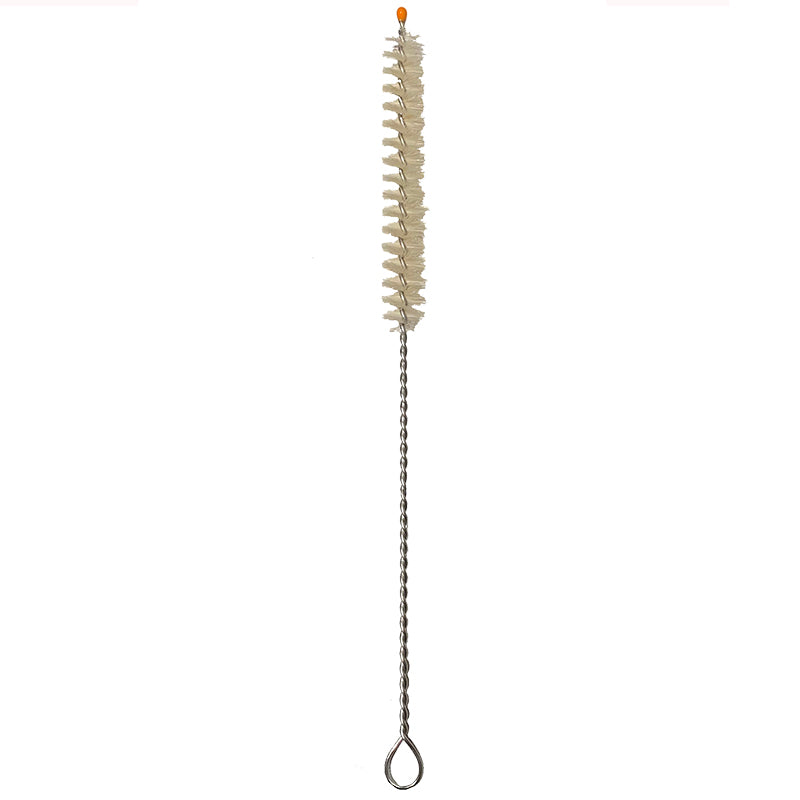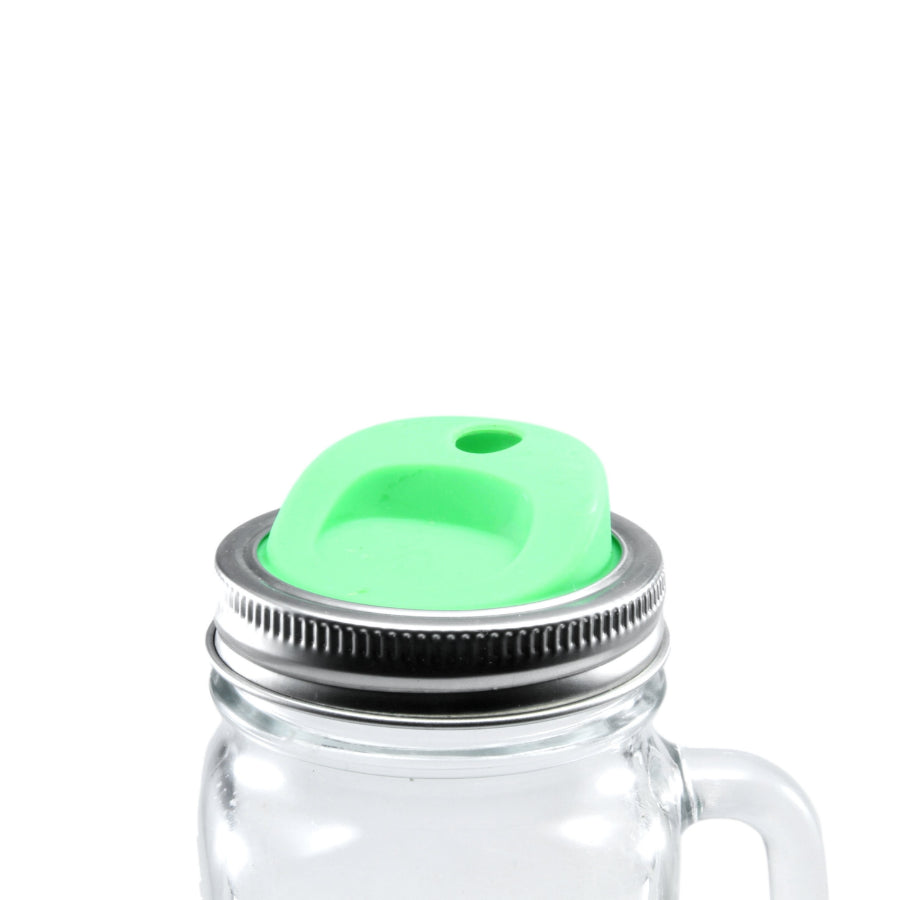How Sharks Became a Beloved Member of the GlassSipper Family
And
33 Reasons Why You Should Love Sharks Too
If you want an eco-friendly reusable drinking straw there are now many options, from bamboo to metal, and everything in between. All have their pluses and minuses (see our blog “Why Glass Drinking Straws Are Better Than The Rest” dated May 18, 2021). For an eco-friendly reusable straw that comes in a wide range of lengths and widths your best option is borosilicate glass straws.
However, if you want a straw that is eco-friendly and comes in a range of lengths and widths that will also always put a smile on your face, I can proudly say that GlassSipper straws are your only choice. What makes GlassSipper reusable drinking straws so much fun are our designs and, to be even more specific, our critter designs. Since founding GlassSipper in 2014 our critter designs have been the heart and soul of GlassSipper - our defining feature that distinguishes us from every other eco-friendly straw maker, glass or otherwise.
Cute critters have always been our calling card. The cuter the better. Over the years I have gradually added new critters to the GlassSipper menagerie. Many of my new critter designs just pop into my mind, others appear in a dream. And sometimes you, my loyal customers, suggest new critters ideas.
In recent years a number of you had been asking for a shark. At first I resisted, assuming that few people would want a shark. You see, I’m part of the generation whose perception of sharks was heavily influenced by having watched Steven Spielberg’s movieJaws as a child. Based onJaws, I thought sharks were mean and nasty killers. The scourge of the oceans. Anything but cute and cuddly. After seeingJaws, it took me a while to get back to swimming in the ocean. One of my childhood friends even refused to take baths for the longest time.
Surprisingly to me, more and more of you kept asking for a GlassSipper shark. Eventually I relented and started working on a shark design. I figured it would be a piece of cake. I mean, how hard can it be? Sharks are pretty simple, right? A long sleek body with sharp teeth, fins, and a tail. No profusion of legs like my Octopus GlassSipper, or my crab and lobster GlassSippers. No elaborate multi-coloured wings like my butterfly GlassSippers. No webbed fingers like my frog or gecko GlassSippers. And no curly trunk and tusks like my GlassSipper elephant.
But for some reason, I struggled to nail down the design, and in the process dozens of failed shark straws ended up in recycling. How to do the teeth? How to do that distinctive dorsal fin that strikes fear in movie goers? And that unique shark snout? And those terrifying shark eyes?
I studied the body of the shark and its component parts. Through lots of trial and error - mostly error - a critter emerged on my straws that started to look more and more like a shark. And along the way I started learning more about sharks. I realized that I had gotten sharks all wrong. They may not be cute and cuddly like my Max the Dog GlassSipper, but sharks are among the good guys in the ocean with many fascinating features, which play a vital and positive role in maintaining a healthy ocean environment.
So last year, during Shark Awareness Week 2020, I introduced my new GlassSipper shark drinking straw. Turtles, Bees, Frogs, and Octopuses remain my best sellers. However, a dedicated community of shark-lovers have made my GlassSipper drinking straw a remarkably popular choice. Thanks to the growing impact of Shark Awareness Week I’m sure that GlassSipper sharksand real-life sharks can only become more and more popular.
Here’s my top 33 list of fascinating things I learned about sharks while designing my GlassSlipper shark:
- Sharks have been around for a very very long time. Sharks first appeared around 455 million years ago. That means sharks predate dinosaurs by 200 million years. Sharks are even older than trees, which first appeared 350 million years ago. Sharks are one of the only animals to have survived four of the five mass extinctions.
- Sharks grow up to 50,000 teeth in a lifetime. Sharks generally have about 45 to 50 teeth in their front row, and up to 15 rows of teeth in each jaw. The rows of teeth at the back move forward into place if a tooth is damaged or falls out.
- Although sharks are vertebrates, they have no bones. Shark skeletons are made of cartilage. Shark cartilage has half the density of bone, which makes sharks lighter and more flexible. These attributes help make sharks particularly effective hunters.
- Scientists can determine the age of sharks by counting shark vertebrae in the same way that one can determine the age of a tree by counting the number of rings in a tree trunk.
- Most sharks are cold-blooded. However, some sharks such as the Great White Shark are warm-blooded, which enable them to grow and swim faster. Warm-blooded sharks eat up to 10 times more than their cold-blooded cousins.
- Many species of shark perpetually swim forward in order to breathe and, as a result, never sleep. These sharks rest while swimming in a state of semi-consciousness.
- Sharks move incredible distances without taking a break. Due to their unusual resting style, sharks travel nonstop for days, with Great White Sharks travelling distances of 2,500 miles or more without even pausing to eat.
- Sharks can avoid stopping to eat by drawing on fat stored in their livers, which can make up a quarter of their body weight.
- Mako Sharks are the world’s fastest sharks, reaching speeds of over 40 miles per hour. Makos can also jump up to 30 feet out of the water.
- Shark skin helps make them so fast. The tooth-like shark scales pointing back towards the sharks’ tail helps streamline their bodies and smooth the flow of water past the body, thereby reducing drag. The tiny tooth-like scales make shark skin feel like sandpaper.
- Shark skin is the thickest of any species. Sperm Whale skin can be more than a foot thick, making them literally bullet-proof.
- Sharks live in all seven of the world’s oceans. There are also species that can survive in mixed salt and freshwater environments like estuaries and watersheds. Other species can live entirely in freshwater.
- There are over 500 species of shark in all shapes and sizes, from tiny Lantern Sharks, which are about the size of a human hand, to Whale sharks which are the size of a bus.
- The Whale Shark is the world’s largest fish and can grow to be 40 feet long and 40 tons in weight. The diet of these gentle giants is primarily plankton.
- The lifespan of large sharks is much longer than that of small sharks. Whale Sharks live up to 100 years, while the 2’-4’ Smooth Dogfish live for around 16 years.
- Greenland Sharks are the oldest vertebrate animals on earth and live as long as 500 years. Which means there are Greenland Sharks living today that were alive when Leonardo Da Vinci painted the Mona Lisa (c. 1503-1506).
- Different shark species have different ways of giving birth. Some lay egg cases nicknamed “mermaid’s purses”. Most sharks, however, are live-bearing. A female might give birth to as many as 48 pups in one litter. In the case of some shark species embryos attack each other in a process called intrauterine cannibalism. The largest embryo will eat its fellow embryos. In this way the surviving embryo is larger at birth and better able to avoid being gobbled up by other predators.
- The gestation period of the Spiny Dogfish shark is two years, making it the longest pregnancy of any vertebrate animal.
- Partly due to the fact that female sharks need to carry their babies for extended pregnancies, female sharks are larger than males in most shark species.
- Sharks can freely move both their upper and lower jaws, unlike humans which can only move their lower jaw. Shark jaws can thereby better grip and tear their prey.
- Great White Sharks have a more powerful bite than jungle cats. The jaws of a 21-foot Great White can produce a force of almost 4,000 pounds per square inch (psi), which is four times stronger than a lion or tiger.
- Great White Sharks can smell one drop of blood in water up to 3 miles / 5 km away. Great Whites' powerful sense of smell comes from an giant olfactory bulb which connects to its nostrils.
- Most sharks also have fantastic night vision. The back of sharks’ eyeballs have a reflective layer called a tapetum which helps sharks see extremely well with little light.
- Sharks also have incredibly acute hearing, and are able to hear prey 3,000 feet away.
- Sharks do have a sixth sense. Sharks have small black spots called the ampullae of Lorenzini near their nose, eyes, and mouth. These spots are special electroreceptor organs that allow the shark to sense electromagnetic fields and temperature shifts in the ocean. Using these tiny organs, sharks can detect the electrical fields generated by other animals.
- The film Jaws was based on real events in 1916, in which a Great White Shark killed four people off the coast of New Jersey.
- Despite what Jaws led me to believe, we’re highly unlikely to be attacked by sharks. Our odds of getting attacked and killed by a shark are 1 in 3,748,067. We are way more likely to die from lightning. On average, in the USA there is one shark-attack fatality every two years and 5-6 worldwide, whereas lightning annually kills 37 people in the USA alone.
- There are plenty of animals that are far more dangerous than sharks. Cute and cuddly hippos kill 2,900 people annually in Africa. Car collisions with deer result in 130 human deaths per year in the USA. Even collisions with cows cause 22 human deaths annually in the USA. That’s right. An American is 44 times more likely to be killed by a cow than a shark!
- Sharks don't have any natural predators. Their biggest threat is humans who kill sharks by the millions annually. Estimates vary as to how many sharks are killed, either for harvesting fins for shark soup, hunting or in incidental “bycatch” in fishing equipment. Estimates range from 70 to 100 million annually.
- Sharks play a key role in maintaining the health of coral reefs. Sharks feed on mid-sized predators, which allows small reef fish to thrive and take care of the coral.
- Epaulette sharks can hold their breath and walk up onto rocky shorelines using their fins and tail to feast on seafood in tidal pools.
- When you flip a shark upside down they go into a natural suspended state or trance called tonic immobility.
- Shark and Chips. If you order 'fish and chips' in Europe don’t assume that you’ll be getting Cod or Halibut. Instead, you'll probably be eating Spiny Dogfish shark meat. I don’t know about you, but I’m sticking with home-grown fish and chips.
Well, that’s about it folks. Enjoy Shark Awareness Week 2021. You might even want to celebrate with a new GlassSipper shark straw. I know I will!







